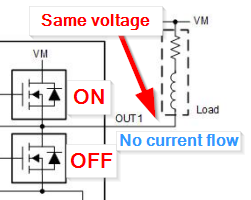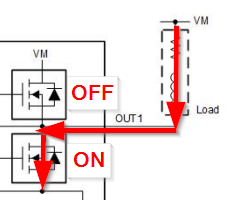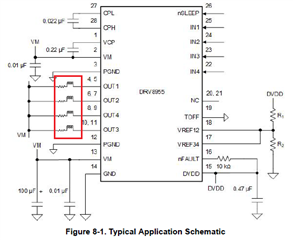Other Parts Discussed in Thread: DRV8935,
Tool/software:
Please help and check below issue:
1. Model: DRV8935/DRV8955
2. When IN1 is in logical "1" state, what's the OUT1 state? High or Low?
There is an issue I think it need your help to confirm..., I describe as below:
3. DRV8955 is connected to a unipolar motor, the other end of the motor coil is connected to VM.
4. IN1~4 are at low state, nSLEEP is set to logic "1", MODE is connected to GND
5. Power turned on, DRV8955 will heat up and can't work.
Our modor application:
6. One end of unipolar motor coil is connected to VM.
7. IN1~4 are active "1", idle "0".
Should I change the connection of item 6 from VM to GND to avoid the DRV8955 heat up and workable?






